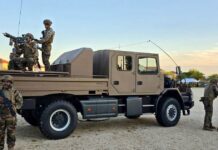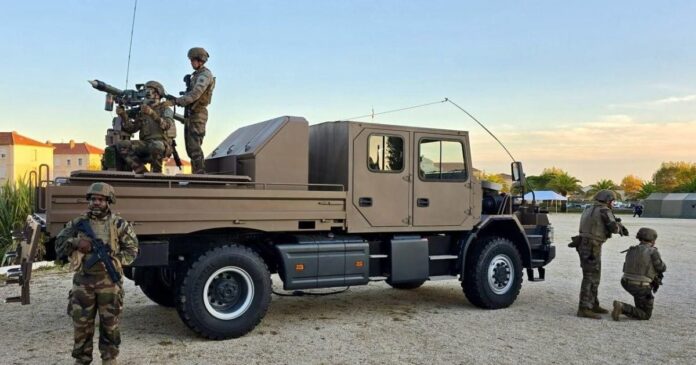Truck manufacturer Scania is venturing beyond its heavy-duty roots with a new player in the battlefield – the Vampire, a specially designed armored dual-cab ute built to combat airborne threats. This innovative vehicle will be deployed by the French military starting in 2026, bolstering their defenses against low-flying targets and drones.
While details are sparse, Scania has confirmed they will deliver 50 Vampire vehicles to France as part of a contract initiated in 2023. The project stemmed from a French Army request for a highly mobile, air-transportable, four-wheel-drive vehicle capable of carrying four soldiers. The Vampire appears perfectly suited to the task: rugged enough for off-road deployment, yet compact enough for airborne transport.
Powering this military machine is expected to be Scania’s robust 13-liter turbo-diesel six-cylinder engine. This workhorse, commonly found in heavy trucks and buses, is projected to deliver around 343kW of power and an impressive 2500Nm of torque—a combination that promises exceptional off-road capability thanks to a bespoke four-wheel-drive system.
This isn’t Scania’s first foray into military vehicle design. The company previously developed the Scania VRP, another specialized off-roader designed to support French special forces.
A Unique Focus on Airborne Defense
What sets the Vampire apart is its unique focus on countering aerial threats. The integrated weapon system will be specifically tailored to engage drones and other low-flying aircraft – a growing concern for militaries worldwide in an era of increasingly sophisticated drone warfare.
While a civilian version of the Vampire seems highly improbable, it offers a glimpse into Scania’s engineering prowess and its willingness to expand beyond its traditional truck market. It also underscores the evolving landscape of modern warfare, where threats increasingly come from the skies.
This innovative development by Scania highlights the critical need for agile, adaptable vehicles capable of addressing new battlefield realities. It remains to be seen how widely adopted this concept will become, but the Vampire certainly sets a precedent for specialized military vehicles in an era defined by airborne adversaries.































































